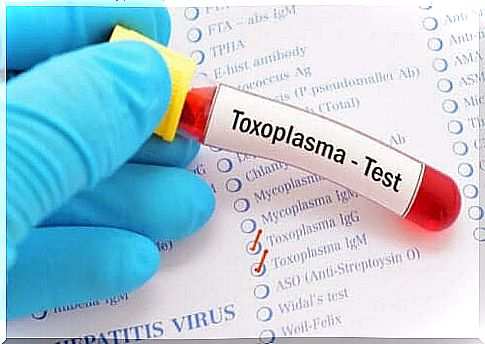Detection And Treatment Of Ocular Toxoplasmosis

Ocular toxoplasmosis is a disease caused by a parasite named Toxoplasma gondii. It is a very common infection that affects around 500 million people worldwide. However, not everyone who is infected develops this disorder, which only affects the eyes.
Individuals with symptoms or consequences of ocular toxoplasmosis either have a weakened immune system or acquired the infection before birth when they were in their mother’s womb. Unfortunately, the condition of their eyes is often difficult to determine, and often it develops into blurred vision or even blindness.
What is ocular toxoplasmosis?
In order to understand ocular toxoplasmosis, we first need to explain how this parasitic infection occurs. Toxoplasma gondii reproduces and lives in cats. They then excrete these bacteria through their feces.
However, it is only one of the methods of infection. Most people get infected because it is also often present in foods such as fruits, vegetables, meat, dairy products and even water. As you can see, everyone can get the infection when they ingest an infected unprepared product.
Pregnant women who come in contact with toxoplasma can also transmit it to their baby. This is because the bacterium can penetrate the placenta and reach the fetus.
The latter case is actually one of the most common associated with ocular toxoplasmosis. The degree of fetal injury will depend on the stage of pregnancy at which the contact occurs. The first trimester, for example, is associated with the highest risk of malformations and complications.

Toxoplasma is a parasite that causes toxoplasmosis in all its types, including the ocular one.
Causes
The infection is typically asymptomatic to begin with. However, reactivation can occur after a certain period of contact, which can lead to an eye injury, which produces a scar that usually goes unnoticed.
When the infection is reactivated, the specific symptoms of ocular toxoplasma begin to appear. It happens when the parasite settles in the retina – the part of the eye that allows perception of images and a sense of sight. The retina becomes inflamed (this process is called retinitis) and impairs vision.
A study published by the Society of Ophthamalogy mentions that recurrent ocular toxoplasmosis is the most common type. However, it can also occur in relation to AIDS or during sustained treatment with corticosteroids or immunosuppressive therapy.
Detection of ocular toxoplasmosis
The diagnosis of ocular toxoplasmosis can be very complex and doctors should evaluate it on a clinical basis – that is, to observe lesions on the eyes. This is because the available tests can only confirm whether there has been contact with the parasite or not.
It is, for example, serology, which allows us to see if there are antibodies to the said infection that may indicate that the person has had the infection at some point. However, as we mentioned above, there are many who have had it and do not develop ocular toxoplasmosis.
What an ophthalmologist observes directly is a lesion on the retina along with a scar that also affects the retina – another membrane that is part of the eye.
Laboratory tests can help guide the diagnosis, but do not confirm it. It is therefore important that a specialist performs a thorough examination of the eye so as not to overlook the almost invisible signs.

Treatment of ocular toxoplasmosis
Ocular toxoplasmosis causes blurred vision, pain in the eye and hypersensitivity to light. In some cases, it can even cause blindness. Unfortunately, there is still no treatment to reverse an injury.
Treatment helps prevent retinal damage as well as future recurrences. It prevents the parasite from multiplying and spreading in combination with antiparasitic agents such as pyrimethamine and sulfadiazine.
In addition, they often add methylprednisone, which is a corticosteroid that helps reduce inflammation. They also prescribe folic acid supplements to avoid the side effects of pyrimethamine.
Injury prevention
The most effective way to prevent ocular toxoplasmosis is by taking preventive measures against it. Doctors recommend preparing all foods properly to avoid infection. In addition, you will need to ensure proper hygiene in cats dealing with pregnant women.
Finally, you should keep in mind that you should see a doctor if you notice any symptoms. If damage is detected quickly, it can help prevent the damage to the eye from spreading.
We hope this article has been informative.









